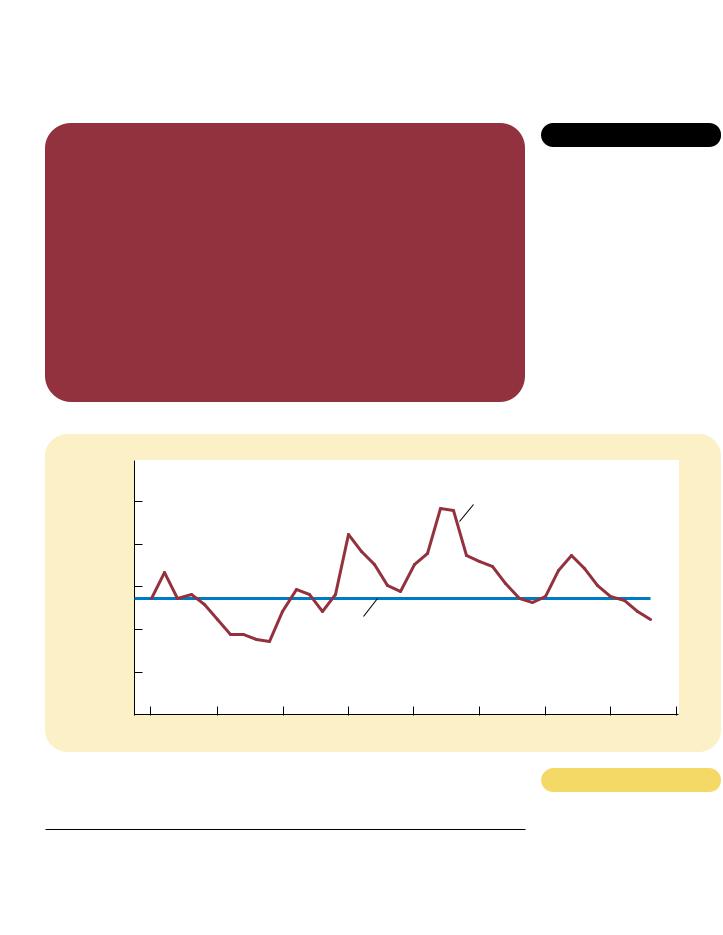
Mankiw Principles of Economics (3rd ed)
.pdf






584 |
PART NINE THE REAL ECONOMY IN THE LONG RUN |
short-run economic fluctuations, including the year-to-year fluctuations in unemployment around its natural rate. In the rest of this chapter, however, we ignore the short-run fluctuations and examine why unemployment is a chronic problem for market economies.
CASE STUDY LABOR-FORCE PARTICIPATION
OF MEN AND WOMEN IN THE U.S. ECONOMY
Women’s role in American society has changed dramatically over the past century. Social commentators have pointed to many causes for this change. In part, it is attributable to new technologies such as the washing machine, clothes dryer, refrigerator, freezer, and dishwasher, which have reduced the amount of time required to complete routine household tasks. In part, it is attributable to improved birth control, which has reduced the number of children born to the typical family. And, of course, this change in women’s role is also partly attributable to changing political and social attitudes. Together these developments have had a profound impact on society in general and on the economy in particular.
Nowhere is that impact more obvious than in data on labor-force participation. Figure 26-3 shows the labor-force participation rates of men and women in the United States since 1950. Just after World War II, men and women had very different roles in society. Only 33 percent of women were working or looking for work, in contrast to 87 percent of men. Over the past several decades, the difference between the participation rates of men and women has gradually diminished, as growing numbers of women have entered the labor force and some men have left it. Data for 1998 show that 60 percent of women were in the labor force, in contrast to 75 percent of men. As measured by labor-force participation, men and women are now playing a more equal role in the economy.
The increase in women’s labor-force participation is easy to understand, but the fall in men’s may seem puzzling. There are several reasons for this decline.
MORE WOMEN ARE WORKING
NOW THAN EVER BEFORE.

